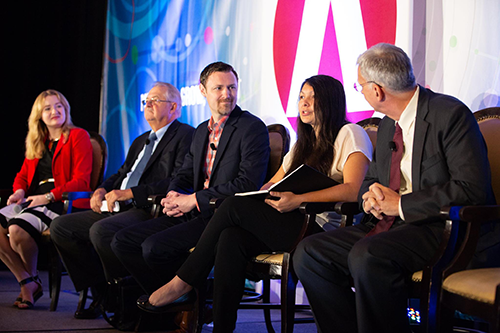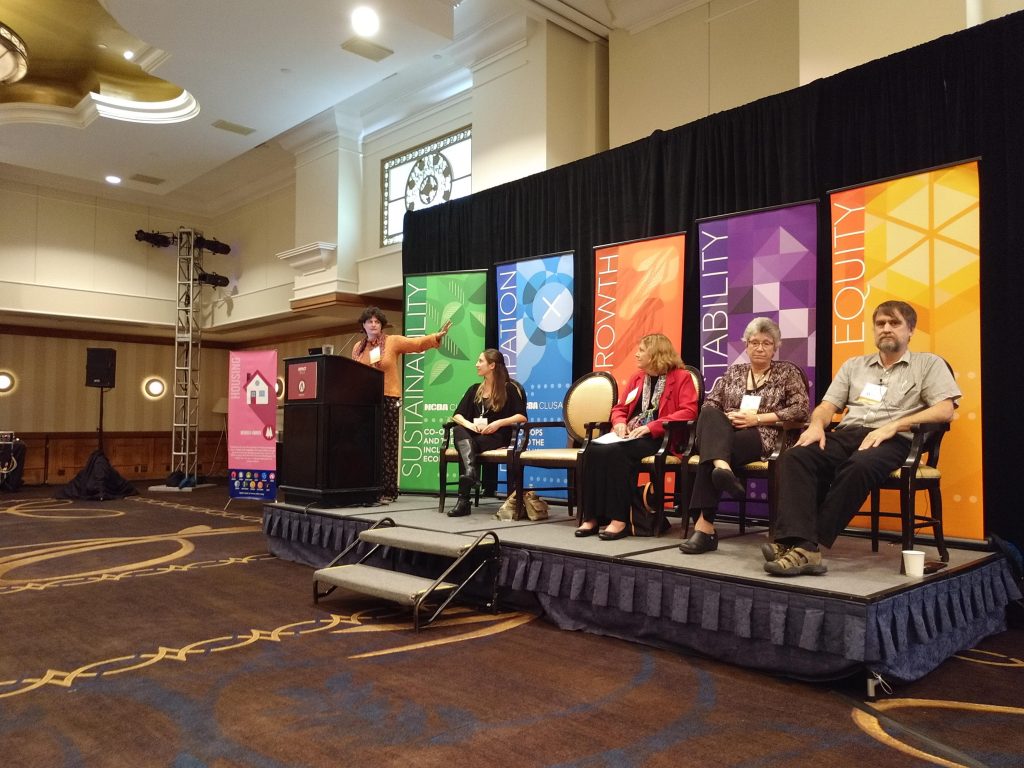 There are some real, tough issues facing our region, nation, and the world. And folks disagree more than ever on how to address those issues. But one thing people from many different perspectives can agree on is that co-ops are a solid, common-sense solution.
There are some real, tough issues facing our region, nation, and the world. And folks disagree more than ever on how to address those issues. But one thing people from many different perspectives can agree on is that co-ops are a solid, common-sense solution.
At the Second Annual Co-op Impact Conference hosted by the National Cooperative Business Association, cooperators from around the nation and the world were able to discuss the issues they’re facing and how co-ops are making a difference. The sessions and hallways were packed and intense. Here is a partial list of some of the highlights:
The Urban Institute is doing a study to assess the impact of cooperative enterprises on their members and communities. They summarize the categories in a handy alphabetical framework: Access; Business Sustainability; Civic engagement; Democratic governance and empowerment; Equity, racial justice, and inclusion; Financial security and advancement for workers; and Growth. Keep an eye out for their report, coming out soon.
One great example of a co-op with a story to tell of their impact is Central Co-op in Seattle, WA. They were able to show that over half of every dollar spent at their store is re-circulated in the local economy. That’s more than twice what regular grocers can say.
In our region, Todd Schmit of Cornell was able to calculate that the multiplier for rural co-ops in New York State in terms of revenue and jobs far exceeded that of other businesses in the same industry categories.
The Association for Black Economic Power and Capital Impact Partners led a discussion on cooperative economy in communities of color. Even as some say the economy is doing well, the racial wealth gap continues to grow. Many communities of color are rediscovering and leveraging their histories of cooperation to center their needs, abilities, and circumstances in building transformative cooperative enterprises. An example is an alternative to predatory pay-day lending called New Day loans.
 I joined my CooperationWorks! colleagues on a panel presentation about developing co-ops in different sectors and regions. Starting from the fact that housing is unaffordable, especially for lower income people, I highlighted manufactured homes as an important source of more affordable housing. For a third of those residences placed in investor-owned communities, the precariousness and lack of control undermine quality of life as well as affordability. Converting to resident-owned cooperatives solves those problems and brings additional benefits, such as greater neighborliness and transferable business and organizational skills. California Center for Co-op Development presented on the “build and recruit” model of worker co-op development which solves for some barriers to co-op start-up. Food Co-op Initiative and Montana Center for Co-op Development shared examples of innovative co-ops serving — and possibly saving — small, remote communities such as Sitka, Alaska and Turner, Montana.
I joined my CooperationWorks! colleagues on a panel presentation about developing co-ops in different sectors and regions. Starting from the fact that housing is unaffordable, especially for lower income people, I highlighted manufactured homes as an important source of more affordable housing. For a third of those residences placed in investor-owned communities, the precariousness and lack of control undermine quality of life as well as affordability. Converting to resident-owned cooperatives solves those problems and brings additional benefits, such as greater neighborliness and transferable business and organizational skills. California Center for Co-op Development presented on the “build and recruit” model of worker co-op development which solves for some barriers to co-op start-up. Food Co-op Initiative and Montana Center for Co-op Development shared examples of innovative co-ops serving — and possibly saving — small, remote communities such as Sitka, Alaska and Turner, Montana.
I spoke with co-op developers working overseas and made the connection with our own work with immigrants and refugees. There is much to learn from and share with our colleagues, including materials, models, and mentors!
The conference was supported by the American Sustainable Business Council, a values-aligned association representing over 250,000 businesses. Their issue areas include worker ownership, high road workplaces, triple-bottom-line accounting, and fostering diverse local economies. A natural fit with co-ops!
We learned about the passage of the Main Street Employee Ownership Act with bi-partisan sponsorship, and what further legislative efforts to advance worker ownership might be on the horizon.
Over lunch with Rebecca Dunn, director of the Cooperative Fund of New England, both of us were interviewed for the Lorne Epstein Show. (Stay tuned for a link to the interview!)
I discovered an entirely new-to-me example of cooperation at work to revitalize a community in the United Kingdom. The Preston Model was inspired by Mondragon and the Evergreen Initiative, which has engaged the Preston City Council, Lancashire County Council, several local colleges and universities, as well as other anchor institutions, to review how they do procurement to encourage local community wealth-building, especially through worker-owned cooperatives.
If you thought that the Rural Electrification Administration was part of the dusty past, think again. Now named the Rural Utilities Service, it provides support for all kinds of infrastructure in rural areas, including broadband and energy efficiency. Several rural electric co-ops are taking advantage of a new $100 million loan pool at 0% interest, to be used to help their members do energy efficiency upgrades whose cost savings pay back the loan. Brilliant!
 I also got to spend time and talk shop with my beloved network of cooperative developers, CooperationWorks! For a glimpse of some of the great work our colleagues are doing around the country, see the latest Networks newsletter.
I also got to spend time and talk shop with my beloved network of cooperative developers, CooperationWorks! For a glimpse of some of the great work our colleagues are doing around the country, see the latest Networks newsletter.
Many thanks to all the wonderful people doing great work to build a prosperous and equitable economy. We are so pleased to be part of the solution with you.

Pingback:CEANYC Goes to Washington! | CEANYC
Pingback:CEANYC Goes to Washington! – Cooperative Economics Alliance